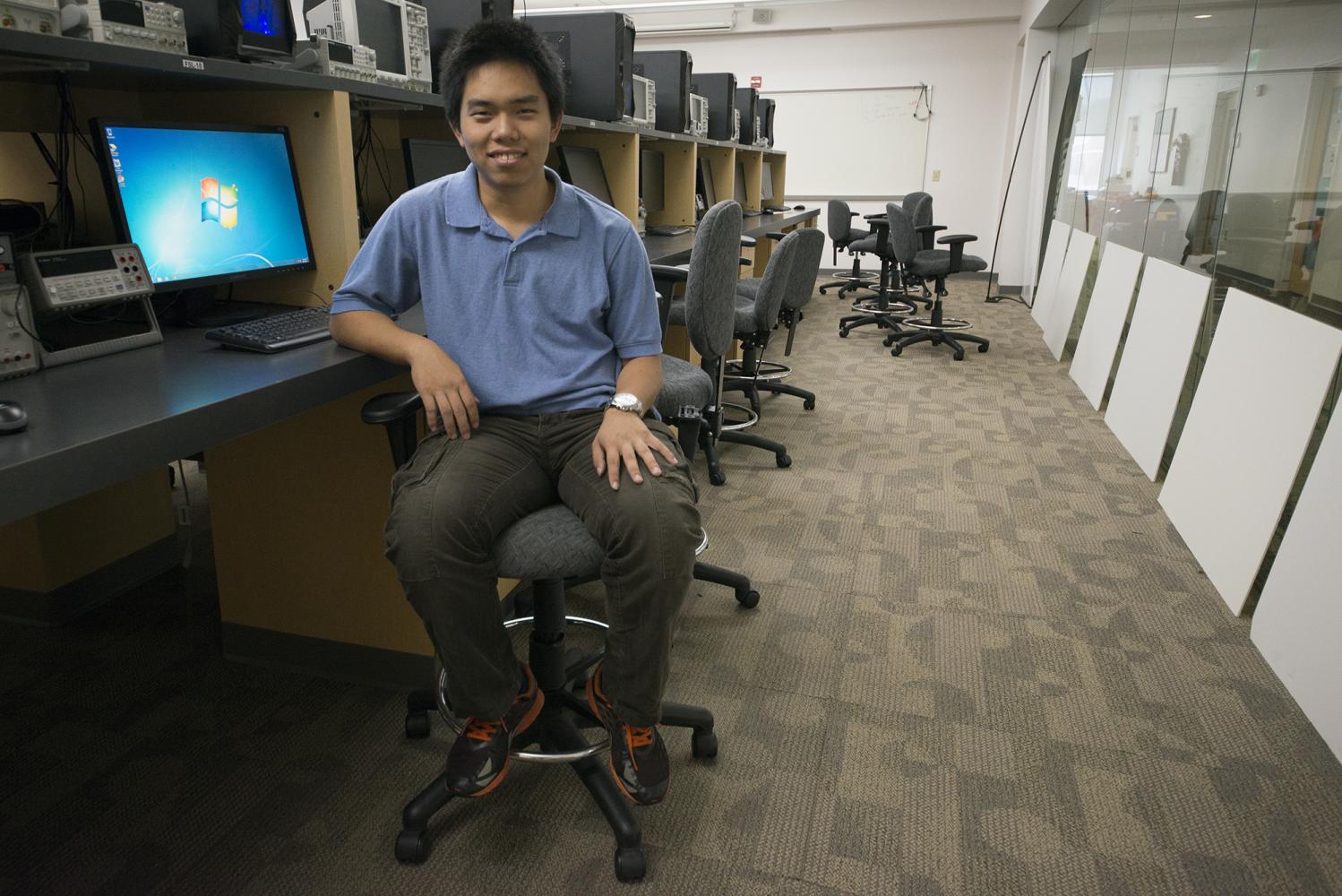RIT: Leading the Way in Technology
by Erica Karen Butler | published Nov. 7th, 2014
This past year, many students have worked at RIT doing research and creating a more technologically advanced campus. With the help of RIT professors, these students have completed phenomenal research projects within the scope of the RIT campus and beyond.
Alexander Dawson-Elli, a fifth year Biomedical Engineering major, and Michael Potter, a fourth year Biomedical Engineering major, worked under the guidance of Dr. Cristian Linte. The key concept of their project was minimally invasive surgery. As surgeries become more complicated, there is a greater likelihood of damage. With minimally invasive surgery, however, both mortality rates and recovery times would decrease. The students utilized tracking technology that would give surgeons the ability to take an image before the surgery that would aid in tracking the surgical device. They were able to use a 3D Slicer program to generate metrics for accuracy and precision. Working together, they framed the problem, broke it down and each executed a portion of the solution. Then, they reconvened to test each other’s work, reiterating problems if a solution was not found, which led to a well-formulated research project.
Alyssa Recinella, a third year Mechanical Engineering major, worked alongside graduate students with assistance from Dr. Satish Kandlikar. Her research involved two-phase cooling through flow boiling in microchannels. With flow boiling, liquid flows over a hot copper surface that is being heated from the bottom up, which results in the water boiling and releasing a gas when it reacts with the hot surface, making the process two phases. The research Recinella and her colleagues did can be applied to many different fields, including nuclear power plants and computational analysis.
Long Pham, a second year Computer Engineering major, worked on processing wind power data from the past in order to predict the amount of power that will be generated in the future. Pham became familiar with the computational software MATLAB under the guidance of Dr. Andres Kwasinski, which was then used to perfect his data. To do this, he retraced the algorithmic steps and restructured code after identifying the problem. Ultimately, he designed reusable code that predicted how much wind power would be generated based on how much had been generated in the past.
At RIT, Dr. Mario Gomes works with both undergraduate and graduate students to create the most efficient, walking legged robot, focusing on rigid body mechanics and dynamics.
“The trick is to have the foot come down and slow down so that it reaches zero velocity, so that it has no impact," he said. "It has a collision, but it doesn’t dissipate any impact.”
Mechanically efficient walking via a legged robot has not been done before, and if it were to be accomplished, it would give further insight into understanding robotics. Gomes also worked with students on an inertia coupled rimless wheel, the success of which was the stepping-stone to his recent robotics project. Gomes believes that improving and learning how to deploy what technology we already have is the best way to advance the technological world right now.
Dr. Michael Schrlau and his student assistant, Akane Fujimoto, a second year Industrial and Systems Engineering student, worked on a sub-cellular level, developing tools to develop technology on a nano-scale using template-based nano manufacturing. They grow carbon nanotubes by releasing gases that contain carbon onto glass capillaries. Chemical vapor deposition causes the gas to break apart and deposits small amounts of carbon on the inside surface. Over time, this carbon gas collects and grows carbon nanotubes on the capillaries. In the end, carbon nanotubes are left attached to very small pieces of glass. The purpose of these nanotubes is to poke cells and collect data from them, which is less damaging and more advanced than other methods.
If students continue the pace of applied technological research that they have sustained thus far, not only will our campus benefit, but hopefully society at large will as well—making RIT a leader in engineering systematic investigations and placing us on the cutting edge of future scientific advances. 




